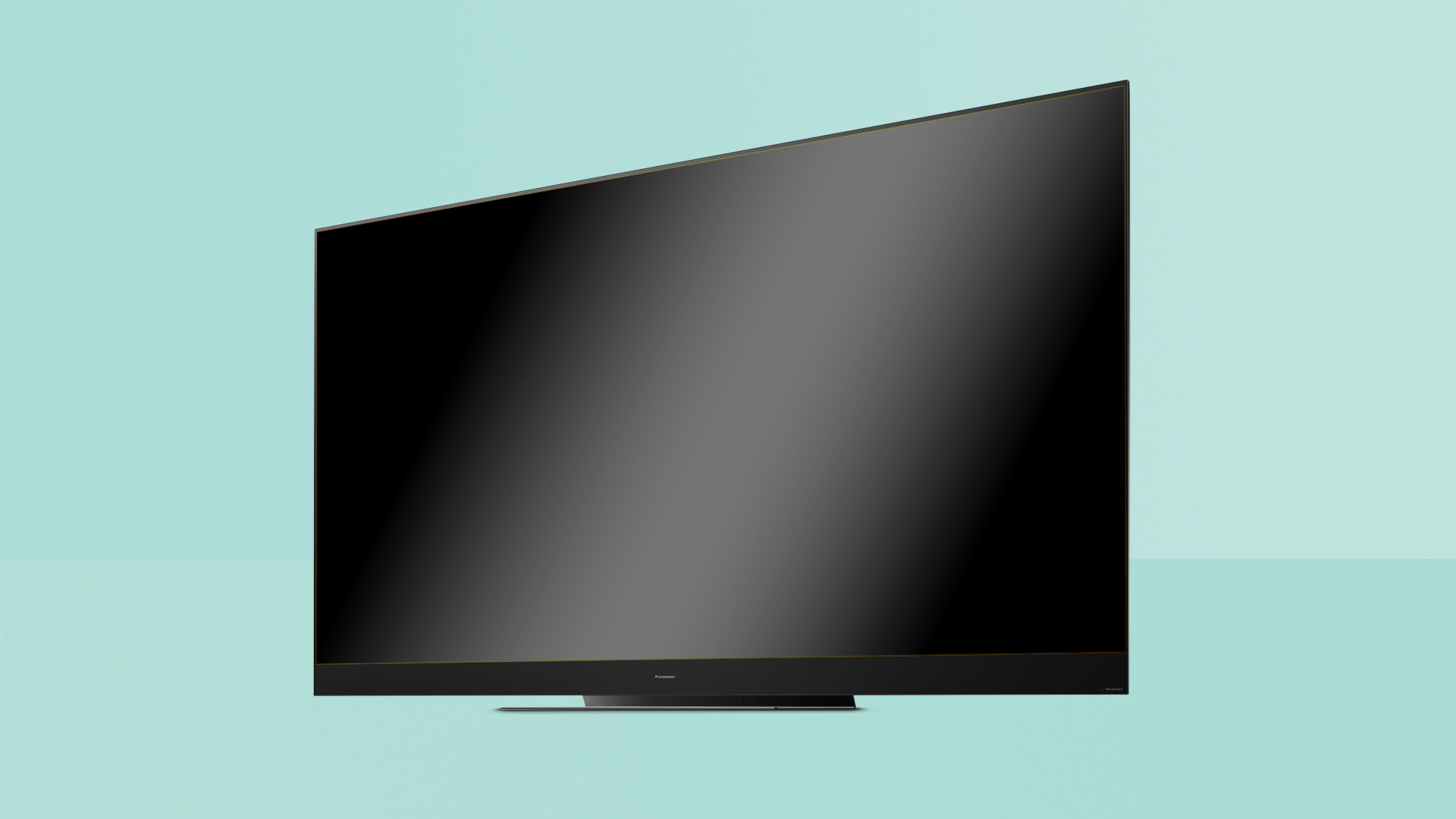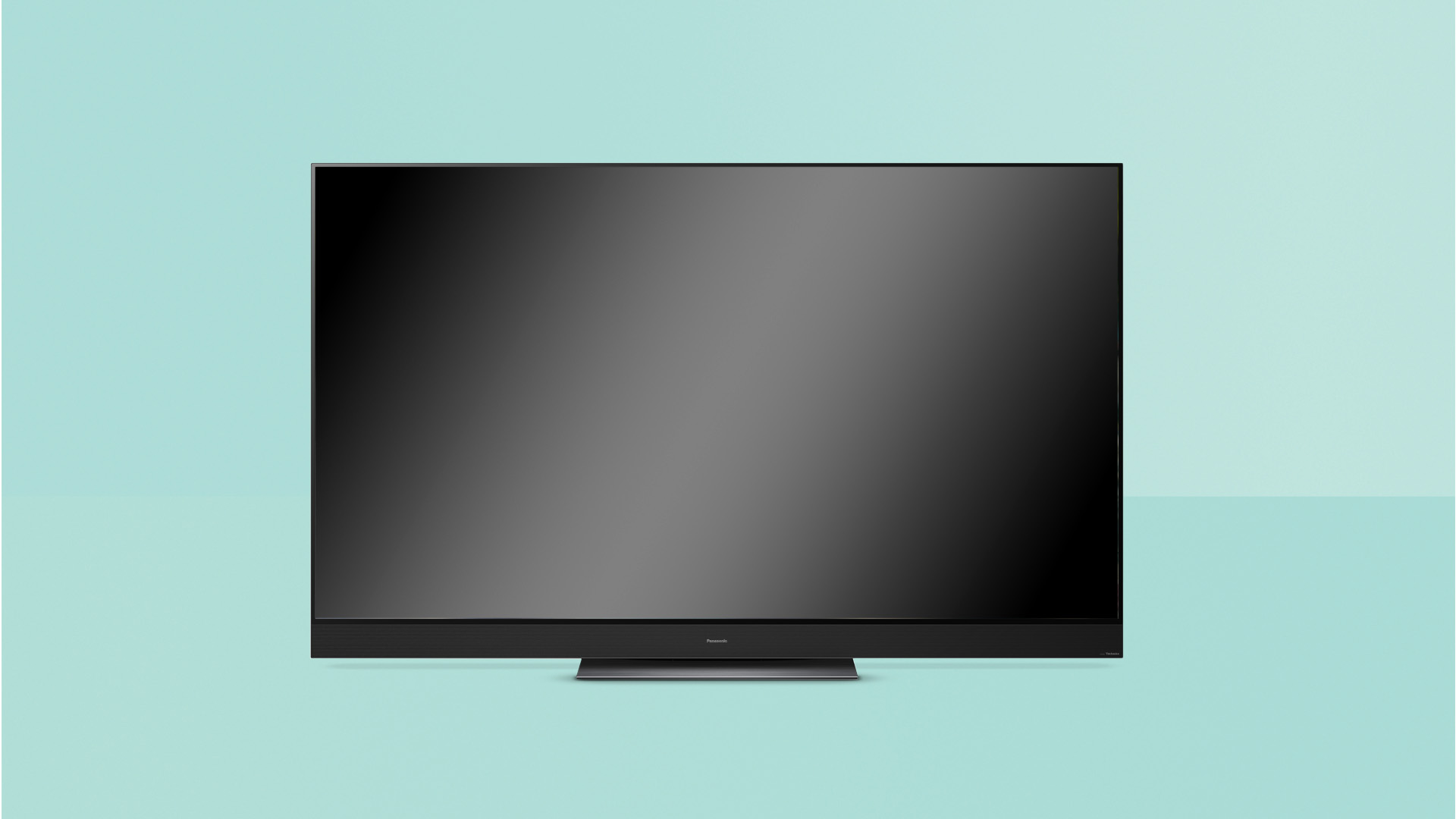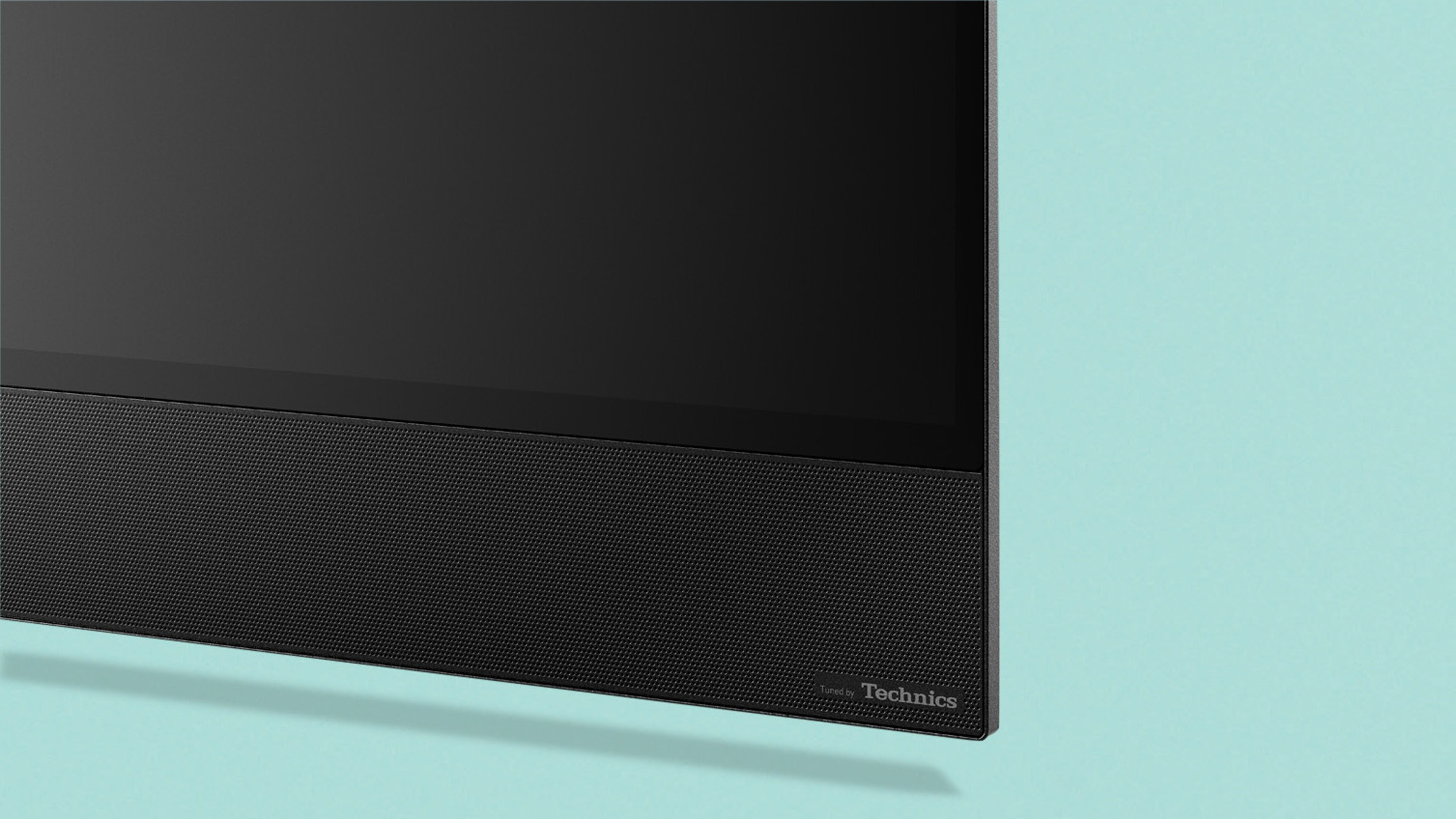Panasonic GZ2000 review (65GZ2000): the best OLED TV of 2019
The Panasonic GZ2000 bring truly astounding image quality


The Panasonic GZ2000 is the best OLED has ever been. It overcomes the tech’s brightness limitation and joins forces with the Hollywood creative community to become the nearest thing to a professional Hollywood screen you can have at home – it should have all home cinema fans reaching for their wallets.
-
+
Remarkable ‘as the director intended’ pictures
-
+
Easy to use smart system
-
+
Exceptional HDR format support
-
+
Brighter than any other OLED
-
-
It’s not cheap
-
-
Marginal shadow detail crushing
-
-
Audio isn’t totally convincing
-
-
No built-in Disney+ or Apple TV apps
Why you can trust T3

Welcome to T3's Panasonic GZ2000 review – please note that the GZ2000 has now been replaced by the new Panasonic HZ2000, as of 2020. What follows is our original review of this TV.
While OLED TVs produce fantastically rich pictures – hence why so many of our best TV picks use the technology – there is one area where it traditionally struggles against its LCD nemesis: Brightness.
With the GZ2000 OLED model, though, Panasonic thinks it’s come up with a solution. This set, uniquely, takes the usual LG-made panels found in every OLED TV and applies some proprietary Panasonic hardware innovation to them to deliver nearly 20% more brightness than its nearest OLED rival.
• OLED vs QLED explained: how they work, and which is best for you
Add in some outstanding Hollywood-inspired processing that's designed to provide images as close to what directors and editors see as possible, and the GZ2000 really is the home cinema dream machine serious home cinema fans have been waiting for.
We've tested the Panasonic TX-65GZ2000, which is the 65-inch model. There's also a 55-inch model, called the TX-55GZ2000. It's only available in those two sizes.
Panasonic GZ2000 review: Price and features
Not surprisingly considering that it relies on exclusive Panasonic hardware, the GZ2000 series costs more than most OLED TVs. In fact, depending on what you compare it to, it costs a lot more. The LG B9 is more half the price, and that's still an OLED TV.
Panasonic never intended the GZ2000 to pull in the masses, though. The brand has plenty of other much more affordable OLEDs in its range (The Panasonic GZ950 is slightly cheaper than the equivalent LG C9) for people with tight budgets to stick to.
No; the GZ2000 is made for the sort of AV enthusiast who wants the best and will pay what it takes to get it. Or perhaps more specifically in this case, it’s aimed at the sort of AV enthusiast who wants a TV that can give them images that get as close as possible to the way their creators intended them to look.
Trying to get much detail from Panasonic on exactly how the new brightness-boosting hardware built into the GZ2000 works is like getting blood from a stone. Clearly the venerable brand is not keen on others copying its work. Essentially, though, the tech builds on techniques Panasonic picked up during its years of plasma TV dominance, by introducing more efficient power management and better panel cooling.
The cooling part is particularly important since heat is a key contributor to screen burn, where prolonged exposure of OLED panels to bright static image elements can eventually see a permanent shadow of those elements being left behind. Panasonic is adamant that the way its technology works completely removes the possibility of the GZ2000’s extra brightness increasing the likelihood of screen burn. Certainly we saw no hint of it during our time with the set.
In a bid to put some numbers on Panasonic’s brightness claims, we measured the GZ2000’s light output when showing a white HDR box covering 10% of an otherwise black screen at just about 1,000 nits. The closest any other OLED brand has got to this is LG, with its C9, E9 and W9 panels. But even these only manage around 850 nits in their very brightest settings.
The 1,000-nit figure is particularly important in today’s world of high dynamic range (HDR) video, since that’s the peak light level achieved by the professional OLED mastering monitor many mastering studios have been using when finalising the look of films and TV shows. So in theory, at least, the GZ2000 should be able to track the light levels of HDR content more accurately than other OLED TVs.
The ‘as the director intended’ flourishes of the GZ2000 don’t stop there, though. Panasonic has long had a laboratory in Hollywood that works with directors, colourists and other creatives to find ways of reproducing more of the look created on £30,000 pro mastering monitors using the consumer TVs people have at home. And with the GZ2000, the results of this collaboration have resulted in a new generation of its HCX Pro video processor, together with picture tuning by top Hollywood colourist Stefan Sonnenfeld.
Sonnenfeld is the co-founder of renowned post-production house Company 3, and has worked on films as huge as Wonder Woman 1984, Top Gun: Maverick, and Star Wars: The Rise Of Skywalker. So Panasonic getting Sonnenfeld to both help tune and endorse its flagship OLED TVs is quite the coup.
The HCX Pro processor is particularly focused on colour, combining with advanced dynamic colour look up table (LUT) technology to replicate the subtle tones and variations professional colour graders want you to see. The HCX Pro processor also applies significant power and proprietary know-how to the difficult ‘near black’ part of OLED picture performance, keeping subtle gradations where other panels start to look noisy or ‘rough’.
The processor works, too, to match the sharpness of pictures to the levels selected in the mastering studio. This minimises the chance for the GZ2000 to make pictures either too soft or too sharp, as can often happen when content passes through a TV’s processing engine.
One final great touch of the HCX Pro system is that it introduces support for all the key HDR formats: HDR10, HDR10+, Dolby Vision and HLG. Most rival TVs drop either HDR10+ or Dolby Vision from their list of supported formats – even though both HDR10+ and Dolby Vision content is now widely available.
The only disappointment about the GZ2000’s picture features is the lack of support for key gaming aids such as variable refresh rates and automatic game mode switching. Though the set’s game mode does deliver a satisfactorily low input lag time of 21ms, it does all mean that gaming is an afterthought after movies..
The Panasonic GZ2000 isn’t just interested in picture quality. It also sports an innovative audio system – designed in conjunction with Panasonic-owned audio brand Technics – that combines built-in Dolby Atmos decoding with a powerful multi-channel speaker array. There are even drivers built into the TV’s top that fire upwards, to create the distinctive Dolby Atmos height effect.

Panasonic GZ2000 review: picture performance
The GZ2000’s new hardware design really does take OLED performance to new heights. Especially when it comes to the increasingly important picture element of brightness.
Fed a wide range of HDR sources, the 65GZ2000 consistently produces them with more brightness than any other OLED TV released to date. Daylight exterior shots look comfortably lighter right across the screen, for instance, than they do even on LG’s 9 series of OLEDs.
Bright highlights of dark scenes, such as street lamps or candles, radiate with a gorgeous intensity thanks to the 65GZ2000’s unique combination of unprecedented OLED brightness and OLED’s ability to position an image's darkest pixel right alongside its brightest one with none of the ‘cross pollution’ associated with LCD’s external backlights.
Most surprisingly of all, even though the 65GZ2000 delivers bright HDR shots with a higher baseline light level than other OLEDs, it still finds another brightness gear for the absolute most intense HDR highlights – direct sun shots, reflections on metal or glass and so on. There’s no sense of the bright end of HDR’s light spectrum getting compressed.
The extra brightness headroom helps the 65GZ2000’s colours, too. Very bright tones, in particular, look more natural and evenly balanced, without the slightly gaudy, flat appearance they can occasionally take on with less bright OLED and LCD panels.
Panasonic’s advanced colour processing is in evidence too, in the beautiful finesse with which the screen portrays even the finest of colour blends, or the faintest of colour tone shifts. This refinement helps both HDR and standard dynamic range (SDR) pictures enjoy a more immersive sense of depth, while objects have a more three-dimensional presence – especially with native 4K sources.
Focusing on the colour refinement also rams home how subtle the 65GZ2000’s light management is. Right down into the very darkest corners of the very darkest scenes, Panasonic’s flagship set delivers detail with scarcely a hint of the noise, blocking artefacts or brightness instability that other OLEDs can suffer with in such difficult picture areas.
Dark scenes on the 65GZ2000 reveal, too, that the hardware measures introduced to boost brightness haven’t compromised OLED’s traditional black level strengths. Its dark scenes still enjoy superbly deep, consistent black colours. And these in turn play their part in underlining the screen’s emphatic colour and contrast.
The Panasonic 65GZ2000’s premium control over colour and light contributes to a lovely sense of natural 4K detail and sharpness, too. There’s never any doubt with good 4K sources that you’re watching a 4K screen, and there’s never any doubt when watching an HD source that it’s being converted to 4K with plenty of finesse and skill. At the same time, though, there’s no sense of the image being over sharpened. Especially if you use the True Cinema preset.
Motion is effectively handled, too – irrespective of whether or not you use the 65GZ2000’s motion processing (though stick to its gentlest setting if you do use it).
There are a couple of minor picture issues. First, strangely the 65GZ2000 can lose a touch of shadow detail in very dark shots compared with cheaper models in Panasonic’s OLED range. This is a fairly small point, though, and I suspect some viewers won’t mind at all trading it for the 65GZ2000’s deeper black levels.
Second, colours aren’t quite as vivacious as they are with the Standard picture preset on LG’s premium 9 series OLEDs. This is possibly, maybe even likely a deliberate side effect of Panasonic’s focus on accuracy. But if so, it might have been nice if Panasonic had provided at least one picture preset that really lets its hair down on the colour front.

Panasonic GZ2000 review: sound quality
With five speakers and a massive 140W of power to play with, you’d expect the GZ2000 to deliver a potentially class-leading sound performance. While it’s certainly not bad, it doesn’t quite scale the heights we’d hoped for.
In the plus column, the upfiring speakers create a genuine sense of height/verticality in the TV’s ‘wall’ of sound. There’s a surprisingly effective portrayal of relative height and left/right height effect positioning in this vertical sound wall, too.
The 140W of power helps deliver plenty of raw volume, and propels the sound away from the TV’s bodywork to create a wider soundstage. Yet despite the size of the sound, it generally does very well at keeping all the subtle effects within the soundstage coherent.
So what’s the problem? First, despite the TV including a forward-facing ‘soundbar’ hanging off its bottom edge, the sound struggles to project forward into the room. This leaves it sounding a bit indirect and low on impact.
A lack of clarity during dense soundtrack moments, meanwhile, can leave them sounding a bit muddled and swallowed. Bass performance is OK but doesn’t reach as deep as we’d hoped, and voices can feel a bit weedy and abstracted from the rest of the mix.
Panasonic does provide the option of adding a (not included) external subwoofer via the headphone jack. We weren't able to try this during our tests, but it’s likely worth doing if you don’t already have a separate sound system. Although, if you’re spending this much on a TV designed to be the pinnacle of home cinema quality, you probably do.

Panasonic GZ2000 review: design and usability
The Panasonic GZ2000 only shows off the usual ultra slim profile associated with OLED TVs in its top left and right quadrants. The rest of the rear is actually quite chunky; a necessary result of its built-in speaker system and heat dissipation required for that bright screen.
The 65GZ2000 also presents a slightly larger face to the world than most 65-inch OLED TVs, thanks to the significant forward-facing speaker bar that hangs off its bottom edge.
While more ‘function over form’ in its approach than most OLED TVs, though, its impressive build quality still gives it an air of class.
It’s very easy to use, too. A simple icon-based home screen complete with multiple scrollable content ‘decks’ gives you a slick and easy way of finding content. The home screen is also easy to customise, and there’s voice control support if you’re fond of talking to inanimate objects.
The only issue with Panasonic’s My Home Screen 4.0 smart interface is that it’s not as rich in apps as most rival systems. The lack of both Apple TV and Disney+ is particularly glaring in 2020. Though you can, of course, get those apps via external devices if you don’t mind spending extra on them.
• The best 4K HDR media streamers

Panasonic GZ2000 review: Verdict
Okay, the Panasonic GZ2000’s sound isn’t quite as good as hoped, and its smart system is lacking a couple of big hitters. But these are both solvable problems.
If you want a TV that delivers HDR more convincingly than any other OLED to date, and can actually reproduce pictures at home that look as close as possible to those the filmmakers are crafting in their mastering suites, this is the set for you. It is, put simply, the best TV for watching movies on.
The brightness even means it erodes the advantages that LCD TVs have for viewing in bright rooms during the day – though it's still only as bright as upper-mid-range TVs, while the top tier ones that match it for price are still much, much brighter than this goes (but won't match it for accuracy and that richness in dark images).
The set is also, inevitably, not cheap by today’s standards. You can get an 8K TV for this price… but it won't have the purity of this set. If you can afford it, this is the best OLED has ever been.
Sign up to the T3 newsletter for smarter living straight to your inbox
Get all the latest news, reviews, deals and buying guides on gorgeous tech, home and active products from the T3 experts
John Archer has been testing TVs and AV gear for over 25 years, having worked on Home Cinema Choice magazine. He's a contributor to Forbes, TechRadar, Trusted Reviews, Wired and many more places – if you've owned a TV in the last couple of decades, John's probably reviewed it somewhere. He's seen so many hot new technologies come and go, like tears in the rain.
-
 Leaked AirPods prototype looks like Nothing... literally
Leaked AirPods prototype looks like Nothing... literallyAnd we are here for them
By Britta O'Boyle Published
-
 OnePlus Watch 3 lands in the UK with a flurry of freebies and a huge discount
OnePlus Watch 3 lands in the UK with a flurry of freebies and a huge discountThe new titanium-clad smartwatch brings 120-hour battery life, ECG health checks, and some serious launch offers
By Matt Kollat Published
-
 Future YouTube feature could put an end to your doomscrolling
Future YouTube feature could put an end to your doomscrollingAnd that's something we would love to see
By Britta O'Boyle Published